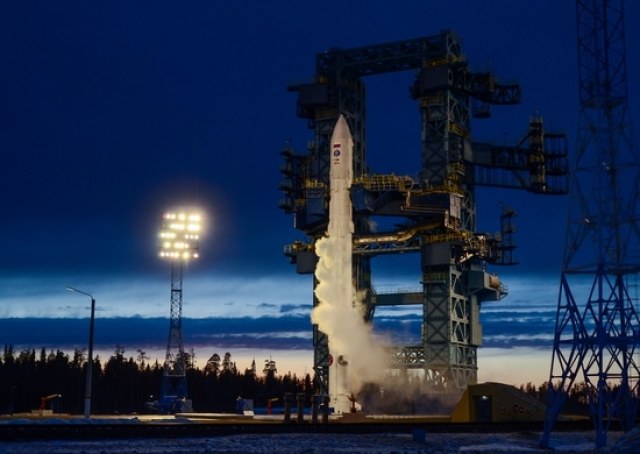This is the second launch of Angara-1.2 in eight years. In December 2023, they want to be the first to launch it from the new launch complex of the Vostochny cosmodrome in the Amur Region.
The Russian carrier rocket of the Angara-1 light class.2" with a satellite designed for the needs of the Ministry of Defense, late in the evening on April 29, it successfully launched from the Plesetsk cosmodrome in the Arkhangelsk region. The launch was supervised by the combat crew of the Space Forces, 30 ground-based measuring devices and more than 50 combat crews of the 15th Army of the Aerospace Forces of Special Purpose were involved.
The spacecraft separated from the Angara at 23:18 Moscow time, after which it entered the target orbit. "The satellite has been accepted for ground support by the Main Test Space Center named after Titov. <...> Stable telemetry communication has been established and maintained with the spacecraft, its onboard systems are functioning normally," the military department reported.
In the main catalog of space objects of the Russian space monitoring system, the satellite is now listed as "Cosmos-2555".
The head of Roscosmos, Dmitry Rogozin, confirmed that the second launch of Angara-1.2 (the first was held back in July 2014) was successful. "The elegant, light "Angara" did not let us down and successfully passed the test. Congratulations to all involved in the successful launch!" — wrote he's in his telegram channel. The head of the state corporation recalled that this particular rocket in December 2023 will be the first to be launched from the new launch complex of the Vostochny cosmodrome in the Far East.
"Angara-1.2" belongs to the family of Russian missiles " Angara " with oxygen-kerosene engines. The carriers have different carrying capacities: starting with the light version with two stages, which can put three and a half tons into low Earth orbit, and up to the heavy "Angara-A5B" (three stages, capable of putting up to 38 tons into LEO and 13.3 into geotransfer orbit).
The first launch of the Angara-A5, the first heavy rocket (weight — about 773 tons, payload — 24.5 tons, on the LEO), which Russia developed after the collapse of the Soviet Union, commissioned by the Ministry of Defense, was carried out in 2014: then a large-scale mock-up of the payload was launched. In December 2020, the second launch was carried out.
At the end of December 2021, the launch of this carrier with a new Perseus upper stage and a payload layout finally took place . Everything went normally, 12 minutes after the launch, Perseus separated from the third stage of the rocket. As Naked Science has already noted, it will take five test launches to start serial use. Therefore, they plan to complete the tests this year, and from 2023 they want to start mass production of a new product.


